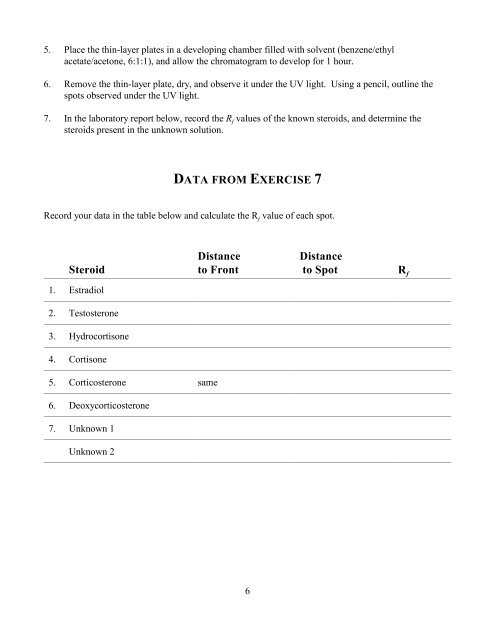Thin-layer Chromatography of Steroid Hormones
Thin-layer Chromatography of Steroid Hormones
Thin-layer Chromatography of Steroid Hormones
Create successful ePaper yourself
Turn your PDF publications into a flip-book with our unique Google optimized e-Paper software.
5. Place the thin-<strong>layer</strong> plates in a developing chamber filled with solvent (benzene/ethyl<br />
acetate/acetone, 6:1:1), and allow the chromatogram to develop for 1 hour.<br />
6. Remove the thin-<strong>layer</strong> plate, dry, and observe it under the UV light. Using a pencil, outline the<br />
spots observed under the UV light.<br />
7. In the laboratory report below, record the R f values <strong>of</strong> the known steroids, and determine the<br />
steroids present in the unknown solution.<br />
DATA FROM EXERCISE 7<br />
Record your data in the table below and calculate the R f value <strong>of</strong> each spot.<br />
<strong>Steroid</strong><br />
Distance<br />
to Front<br />
Distance<br />
to Spot<br />
Rf<br />
1. Estradiol<br />
2. Testosterone<br />
3. Hydrocortisone<br />
4. Cortisone<br />
5. Corticosterone same<br />
6. Deoxycorticosterone<br />
7. Unknown 1<br />
Unknown 2<br />
6
















